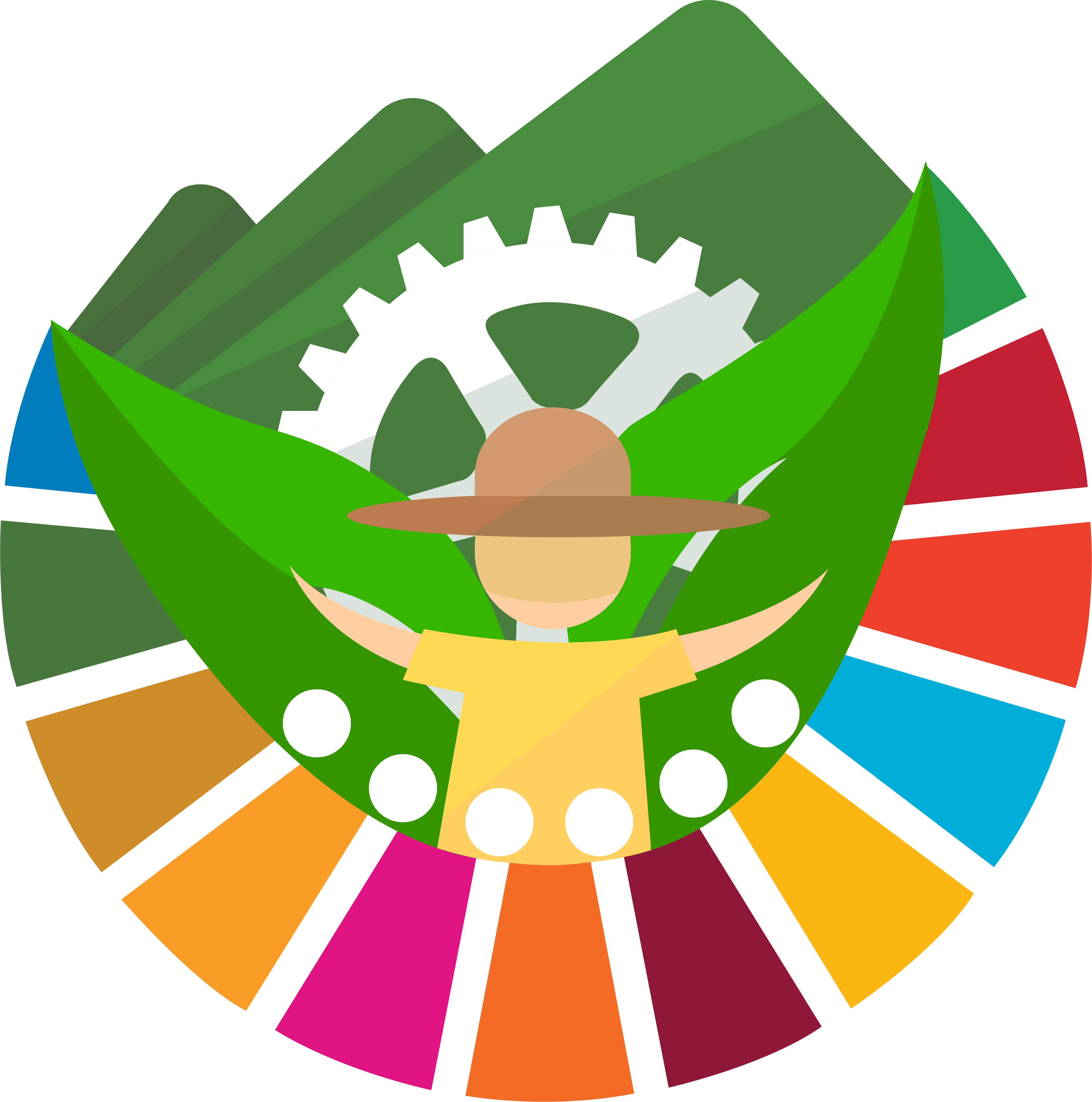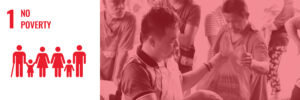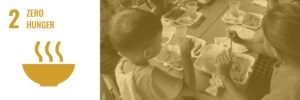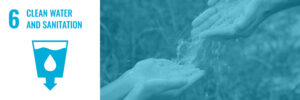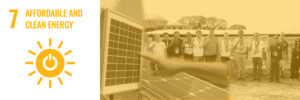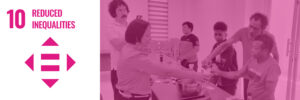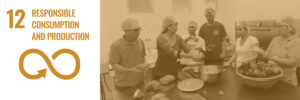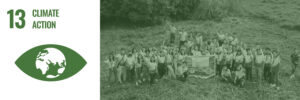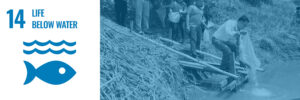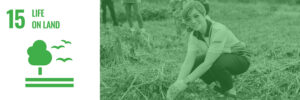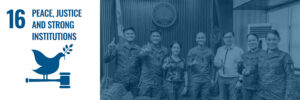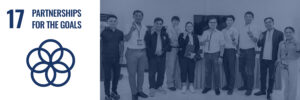2023 – Research | SDG 13 – Climate Action
Technical Research Category
Development of Palleted Biochar as an Organic Amendment for Improved Soil Quality and Productivity
Proponents: Artemio A. Martin, Jr., Batiana M. Mendoza
Abstract
Environmental challenge like global warning prompted the agricultural sector the need in develop carbon-rich materials such as biochar to improve soil fertility and crop productivity. Biochar from the 69:40 mixture of decomposed poultry manure and biowaste materials at– rice hull, corn, cobs, coconut shell, sugarcane bagasse and peanut shell – were produced thru pyrolysis. Biochar is transformed into pellets with corn starch as binder for ease of handling and application Biochar products were alkaline (pH 9.73 :0 10 39). high organic matter (38 77- 52.30 percent), and organ: carbon (22 49 — 78 13 percent). The total nitrogen ranged from 1,94 to 2 62 percent, available phosphorus is 2.88 – 3.75 percent, and potassium is 3.29 – 4.50 percent. NPK of the five (5) biochars is from 8.64 to 9.90, considered as organic. C/N ratio ranged from 11.21 – 11.60 C g-1 N considered narrow, hence preferable and acceptable. The pelleted biochar contains micronutrients with Cu (31.88-44.69 ppm), Zn (141 – 415 ppm), Mn (307 – 358 ppm) and Fe (748 – 1036 ppm). Soil pH significantly improved with biochar application, increased soil organic carbon, nitrogen, phosphorus and potassium contents of soils. Biochar products as organic soil amendment significantly improved yield of rice, corn, eggplant and honeydew, while indicated high potential as nutrient supplement to the recommended rate of inorganic fertilizer in corn, pepper, carrot and radish. Biochar production is a waste management strategy, providing farmers and rural households inexpensive means to tum biomass wastes into quality organic fertilizer (pelleted biochar) to sustain them organic farming activities.
Evaluation of Mycelial Growth of Wood Ear Mushroom (Auricularia auricula-judea) on Different Culture Media
Proponent: Joel P. Bautista
Abstract
This study evaluated the mycelial growth of Auricularia auricula-judea (wood ear mushroom) on different culture media: Potato Dextrose Agar (PDA), Cassava Dextrose Agar (CDA), Rice-Wash Dextrose Agar (RWDA), Sweet Potato Dextrose Agar (SPDA), and Corn Starch Dextrose Agar (CSDA). The experiment was laid out in a Completely Randomized Design (CRD) with three replications. Mycelial growth was monitored by measuring the average diameter of mycelial colonies daily over two weeks. Statistical analysis using ANOVA revealed significant differences in mycelial growth among treatments. Results indicated that CDA and RWDA were comparable to PDA, the standard medium, in supporting mycelial growth. These findings suggest the potential for alternative, cost-effective substrates in mushroom cultivation. this study contributes to identifying sustainable media options for commercial mushroom production.
Extension
PROGRAM/PROJECT TITLE: RESILIENCE-BUILDING AMONG SMALLHOLDER FARMERS OF SELECTED UPLAND FARMING COMMUNITIES IN THE PROVINCE OF ISABELA, PHILIPPINES
The smallholder upland farmers in Isabela, Philippines are one of the most vulnerable sectors to external shocks such as pandemic, climate change and natural calamities, particularly typhoons. As external shocks are inevitable, there is a need to build the resilience of agricultural sector especially in developing nations such as the Philippines particularly the vulnerable farmers in the uplands farming communities in the country through redesigning of their agricultural production systems that are based on the sustainable use of natural resources such as agroforestry system. This proposed capacity development project aims to increase the resilience of vulnerable smallholder farmers in the uplands from critical and pervasive threats of COVID-19 pandemic and natural disasters. There are policy assessments done and proposed specific suggestions for institutionalization of agroforestry in the area. The conduct of multiple trainings such as workshops and training of trainers enhanced and encouraged the farmers to be more engaged with the proposal of the demonstration farms which are now present in certain areas of the upland barangays.
SDG Addressed: SDG 1 – No Poverty; SDG 2 – Zero Hunger; SDG 11- Sustainable Cities and Communities; SDG 13 – Climate Action; SDG 17 – Partnerships for the Goals
6P’s Per Objectives:
This proposed capacity development project aims to increase the resilience of vulnerable smallholder farmers in the uplands from critical and pervasive threats of COVID-19 pandemic and natural disasters. The project specifically aimed to:
- build the knowledge and skills of upland smallholder farmers, farmer organizations, and local government units in the design and establishment of appropriate agroforestry systems in their local communities (People Services, Places and Partnerships) ;
- utilize and strengthen the resources and capacity of local multi-stakeholders respectively, for collaborative resilience-building projects (People Services, Places and Partnerships) ; and
- formulate policy recommendations for institutionalization of adaptive and resilience-building programs (Policies, Publication)
WEED BENEFITS – THE UTILIZATION OF GRASSES, SEDGES, AND BROADLEAVES AS SOURCE OF LIVELIHOOD
Proponents: Eloi Theresa A. Romero, Evelyn B. Cristobal, Jackson Ramos
Grasses, sedges, and broadleaves are considered weeds. These are plants whose undesirable features outweigh their desirable characteristics. They are known as pest in the agricultural fields that interfere with crop growth and development through competition and allelopathy. However, since weeds are plants, they have characteristics that can be beneficial to the ecosystem and to man in daily life including as a source of livelihood. One of the potential livelihoods from the use of weeds is through preserving weeds and using it for letter cards, bookmarks, and other handicrafts such as invitation cards bouquet of dried weeds for weddings, birthdays, valentines’ day, and Christmas gift cards.
Youth at Women and Children Protection Center and Lingap Center were the beneficiaries of these projects by teaching them about weed preservation and used it in making valuable products as a source of income. As feedback, the project served as emotional outlet for the youths from Women and Children Protection Center, skills in arts and craftsmanship were discovered and enhanced, learned that weeds can be a source of income, and the skills taught by the project helped each participant become entrepreneurs while staying in the centers and/or leaving the centers to start a new life.
